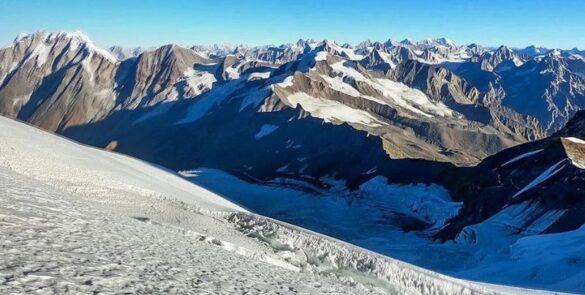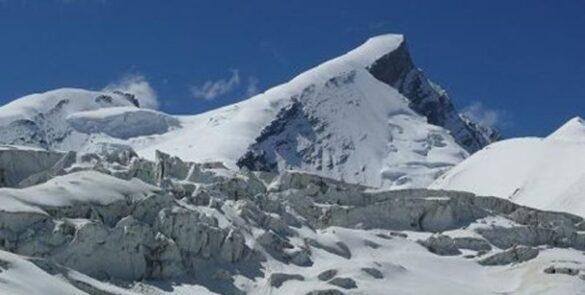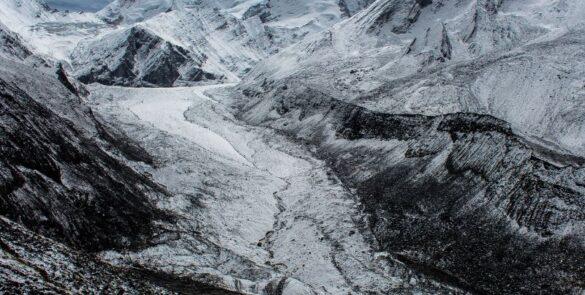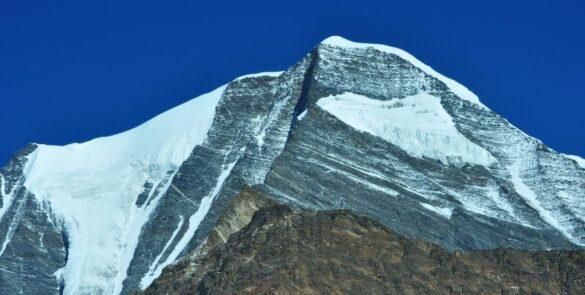Base Camp
Sankri
Region
Uttarakhand
Trek Grade
Difficult Challenging
Trek Distance
70 Kms
Trek Duration
15 Days
Highest Altitude
6,387 meters
Best Season
May-June, Sep-Oct
Pick & Drop Point
Dehradun
Railway Station
Dehradun
Nearest Airport
Dehradun
Region
Uttarakhand
Base Camp
Sankri
Trek Grade
Difficult Challenging
Trek Distance
70 Kms
Trek Duration
15 Days
Highest Altitude
6,387 meters
Best Season
May-June, Sep-Oct
Railway Station
Dehradun
Pick & Drop Point
Dehradun
Nearest Airport
Dehradun
Contact Us
₹ 87,000
+5% GST
- Transport Included | Dehradun & Return
ABOUT BLACK PEAK EXPEDITION
The Black Peak Expedition, also known as Kala Nag, is a challenging and exhilarating mountaineering endeavor located in the Himalayas of India. Black Peak is one of the prominent peaks in the Garhwal region of Uttarakhand. Its local name, Kala Nag, translates to “Black Serpent,” aptly describing its dark and imposing appearance against the sky.

The Black Peak Trek is situated in Sankri, Uttarkashi district, Uttarakhand, India. Sankri serves as the starting point for various treks, including Har Ki Dun and Kedarkantha. Surrounded by the Himalayas, Sankri offers stunning landscapes and easy access to adventure. Uttarkashi, known as the “Land of Gods,” adds spiritual significance to the region. From Sankri, trekkers ascend towards Black Peak, standing over 6,387 meters (20,955 ft) high. The journey offers breathtaking views of snow-capped peaks, forests, and alpine meadows. It’s a challenging yet rewarding experience for mountaineers.
The expedition typically begins in the picturesque town of Sankri Village, where adventurers gather and make final preparations before embarking on their journey. From Sankri, the team proceeds towards the ruinsara tal, usually situated at an altitude of around 3,600 meters (11,850 feet). Along the way, trekkers traverse through stunning alpine forests, rugged terrain, and pristine devsu meadows, gradually acclimatizing to the increasing altitude.

Upon reaching the base camp, climbers set up their tents and establish a temporary home amidst the breathtaking Himalayan landscape. Here, they engage in essential activities such as rest, training, and further acclimatization to ensure their bodies are prepared for the challenges ahead.
The ascent to the summit of Black Peak is a multi-day endeavor that demands physical endurance, technical skill, and mental fortitude. Climbers navigate through a variety of terrains,
including steep snow slopes, icy ridges, and rocky outcrops, all while contending with unpredictable weather conditions common to high-altitude environments.
Throughout the ascent, climbers rely on specialized mountaineering equipment such as ice axes, crampons, and ropes to safely navigate the terrain and overcome obstacles. Teamwork and communication are paramount as climbers support each other and work together to overcome challenges.

As the team progresses higher, they may establish additional camps at strategic points along the route, gradually ascending towards the summit in a series of carefully planned stages. These camps provide essential shelter and rest, allowing climbers to recuperate and acclimatize before pushing onwards.
The final push to the summit is often the most challenging, requiring climbers to summon their reserves of strength and determination to conquer the remaining distance. Upon reaching the summit of Black Peak, climbers are rewarded with awe-inspiring panoramic views of the surrounding Himalayan peaks, including Swargarohini, Bandarpunch, Kedarkantha, Draupadi ka Danda, Gangotri peaks.
After celebrating their achievement and capturing memories through photographs, climbers begin their descent back to base camp, carefully retracing their steps and navigating the terrain with caution. Once safely back at base camp, the team celebrates their successful expedition and reflects on the incredible journey they have undertaken.
The Black Peak Expedition is not only a test of physical prowess but also a profound adventure that offers participants a deep appreciation for the beauty and majesty of the Himalayas. It is an experience that challenges individuals to push beyond their limits, forge lasting bonds with fellow climbers, and return home with memories that will last a lifetime.

FIX DEPARTURE
1st, 2nd, 3rd, 4th, 5th, 6th, 7th, 8th, 9th, 10th, 11th, 12th, 13th, 14th, 15th, 16th, 17th, 18th, 19th, 20th, 21st, 22nd, 23rd, 24th, 25th, 26th, 27th, 28th, 29th, 30th, 31st May.
1st, 2nd, 3rd, 4th, 5th, 6th, 7th, 8th, 9th, 10th, 11th, 12th, 13th, 14th, 15th, 16th, 17th, 18th, 19th, 20th, 21st, 22nd, 23rd, 24th, 25th, 26th, 27th, 28th, 29th, 30th, 31st June.
1st, 2nd, 3rd, 4th, 5th, 6th, 7th, 8th, 9th, 10th, 11th, 12th, 13th, 14th, 15th, 16th, 17th, 18th, 19th, 20th, 21st, 22nd, 23rd, 24th, 25th, 26th, 27th, 28th, 29th, 30th, 31st Sept.
1st, 2nd, 3rd, 4th, 5th, 6th, 7th, 8th, 9th, 10th, 11th, 12th, 13th, 14th, 15th, 16th, 17th, 18th, 19th, 20th, 21st, 22nd, 23rd, 24th, 25th, 26th, 27th, 28th, 29th, 30th, 31st Oct.
FAQs
The best time to attempt the Black Peak Expedition is typically during the pre-monsoon (spring) season from May to June and the post-monsoon (autumn) season from September to October. These periods offer relatively stable weather conditions and clearer skies, ideal for mountaineering.
Climbing Black Peak is considered challenging, requiring climbers to possess a high level of physical fitness, technical mountaineering skills, and prior experience with high-altitude expeditions. The route involves navigating through varied terrain, including steep snow slopes, icy ridges, and rocky sections.
Participants should have prior experience with high-altitude trekking and preferably some basic mountaineering skills. It is advisable to undergo physical training to build endurance, strength, and stamina, along with practicing skills such as ice climbing, rope management, and glacier travel.
The duration of the Black Peak Expedition varies depending on factors such as weather conditions, acclimatization needs, and the chosen route. On average, the expedition lasts around 14 to 16 days, including traveling from Dehradun, trekking to the base camp from sankri, summit push, and descent.
Altitude sickness is a potential risk during the Black Peak Expedition, especially as climbers ascend to higher altitudes. Adequate acclimatization, gradual ascent, proper hydration, and recognizing symptoms early are essential for mitigating altitude sickness. Climbers should also be prepared to descend if symptoms worsen.
Essential equipment includes mountaineering gear such as crampons, ice axes, harnesses, helmets, ropes, trekking poles, and appropriate clothing for cold and variable weather conditions. It is also advisable to carry personal items, first aid kit, high-altitude medicines, and camping gear.
Yes the age criteria is 18 years to 60 years, and participants should be in good health and physical condition, with the ability to handle the demands of high-altitude mountaineering. Minors may require parental consent and should be accompanied by experienced adults.
Climbing teams for the Black Peak Expedition typically consist of 4 to 10 members, including climbers, guides. Smaller teams allow for better coordination, safety, and efficient decision-making during the ascent.
The success rate of summiting Black Peak varies depending on factors such as weather conditions, team experience, and individual fitness levels. On average, successful summit attempts range from 70% to 80%, with proper planning, preparation, and teamwork playing crucial roles.
Yes, climbers are required to obtain permits from the local authorities, IMF or government agencies responsible for managing the region. These permits may include entry fees, environmental levies, and documentation of the expedition itinerary and participants.
Accommodation during the expedition typically includes tents at designated campsites along the route, with basic facilities for shelter and rest. Meals are usually provided by expedition organizers and consist of nutritious, high-energy food prepared by trained cooks. Special dietary requirements can be accommodated with prior notice.
Expedition guides leading the Black Peak Expedition are typically experienced mountaineers having Advance Mountaineering Course with extensive knowledge of the local terrain, weather patterns, and safety protocols. They undergo rigorous training and certification, possessing first-aid skills and the ability to make informed decisions in challenging situations.
Expedition teams have established emergency protocols for responding to accidents or injuries during the climb, including communication procedures, evacuation plans, and access to medical supplies. Guides are trained to assess and manage medical emergencies, while evacuation may involve porter rescue or evacuation to lower altitudes.
The cost of participating in the Black Peak Expedition varies depending on factors such as the duration of the expedition, services provided, group size, and logistical expenses. Costs typically cover permits, guides, accommodation, meals, equipment, transportation, and expedition support.
Weather conditions during the climbing season can vary, ranging from clear skies and mild temperatures to sudden storms and high winds. Climbers should be prepared for rapid weather changes and adjust their plans accordingly, prioritizing safety and flexibility during the expedition.
DETAILED ITINERARY
Drive : 190 km, 7-9 hours
Altitude : 1,920 meters
Jio and bsnl network available
No bank and ATM at Sankri village
Bring your Original ID card with a copy
Trek Briefing in the evening
Overnight stay in Sankri
Depart approximately 8-9 hours. Enjoy breathtaking views of the Himalayan foothills, passing through charming towns and villages along the way. Stop for refreshments and meals at roadside eateries. Arrive in Sankri, a small village nestled amidst pine forests and surrounded by from Dehradun early in the morning by road, embarking on a scenic journey that takes snow-capped peaks. Check into your Homestay or Hotel, where you'll spend the night in preparation for the trek ahead.
Drive : 25 km, 2-3 hours
Trek : 5 km, 3-4 hours
Altitude : 2,900
Overnight stay in tents
After an early breakfast, depart from Sankri and drive to the Seema, which serves as the starting point for the trek. Begin the trek towards Devsu Bugyal, traversing through dense forests of oak, pine, and rhododendron.
Enjoy panoramic views of Devsu Meadow as you ascend to higher altitudes. Reach Devsu Bugyal, a scenic alpine meadow surrounded by towering peaks, and set up camp for the night amidst nature's splendor.
Trek : 10 km, 7-8 hours
Altitude : 3,600 m
Wake up to the crisp mountain air and stunning vistas of the surrounding landscape. Resume the trek towards Ruinsara Tal, a glacial lake nestled amidst pristine wilderness.
Trek along well-defined trails, crossing gushing streams and verdant meadows. Pause for photo opportunities and soak in the tranquility of the surroundings. Arrive at Ruinsara Tal, where you'll camp by the shimmering waters of the lake, with the majestic peaks towering overhead.
Trek : 7km, 5-6 hours
Altitude : 4,050 m
- Kyarkoti base camp is at the foothill of Swargarohini.
Begin the day's trek towards Kyarkoti Base Camp, located at a higher altitude amidst rugged terrain. Navigate rocky trails and moraines, with occasional sightings of Himalayan wildlife such as blue sheep, Thahr and musk deer. Experience the thrill of crossing glacial streams and negotiating challenging sections of the trail. Set up camp at Kyarkoti Base Camp, surrounded by panoramic views of snow-capped peaks and glaciers, and spend the night under the starlit sky.
Trek : 5 km, 4-5 hours
Altitude : 4,530 m
Embark on the trek from Kyarkoti Base Camp to Advanced Base Camp, ascending to even higher altitudes. Traverse across glaciated terrain, roped up for safety under the guidance of experienced mountaineers. Feel the exhilaration of being surrounded by towering peaks and vast expanses of ice and snow. Reach Advanced Base Camp, where you'll acclimatize and prepare for the upcoming summit push, resting for the night in anticipation of the challenges ahead.
- Training and Acclimatization day
Spend the day at Advanced Base Camp, engaging in light activities to aid acclimatization and prepare mentally for the summit bid. Participate in briefings and training sessions conducted by the expedition leader, focusing on safety protocols and climbing techniques. Enjoy hot meals and beverages, replenishing your energy reserves for the strenuous days ahead.
Trek : 2 km, 3-4 hours
Altitude : 5,060 m
Set out early in the morning for the ascent towards the summit, equipped with crampons, ice axes, and other essential gear. Navigate crevassed terrain and steep slopes, roped up with your team for safety. Establish Camp 1 at a strategic location along the route, where you'll rest and refuel before continuing the climb the following day.
Trek : 5,500 m
Altitude : 3 km, 4-5 hours
Resume the ascent from Camp 1 towards the summit, tackling technical sections of the route with focus and determination. Negotiate steep couloirs and rocky ridges, carefully placing each step to maintain balance and stability. Reach Summit Base Camp, the final staging point before the summit attempt, where you'll rest and prepare for the culmination of your trekking.
Trek : 3 km each, 7-8 hours
Altitude : 6,387 m, 20,955 ft
Technical ascent
Fixed rope climbing
Midnight summit push
Wake up before dawn and begin the summit push under the glow of headlamps, following the footsteps of those who have gone before you. Navigate through challenging terrain, including exposed ridges and icy slopes, using fixed ropes and anchors for assistance. Push your physical and mental limits as you ascend towards the summit of Black Peak, driven by the desire to reach the highest point and savor the unparalleled views.
Celebrate your achievement as you stand atop the summit, surrounded by the vastness of the Himalayas stretching out in all directions. Take in the breathtaking panorama of snow-capped peaks and deep valleys below, capturing memories that will last a lifetime.
Descend safely to Summit Base Camp, where you'll rest and relive the moments of triumph and camaraderie with your fellow climbers.
- Reserve day for second attempt for summit climb
Keep this day as a contingency in case of adverse weather conditions or other unforeseen challenges. Use the day to rest and recuperate, reflecting on the experiences of the expedition and savoring the sense of accomplishment.
Alternatively, if the weather permits, descend back to kyarkoti and continue, explore the surroundings and soak in the beauty of the high Himalayas, capturing photographs and memories to cherish forever.
Trek : 10 km, 6-8 hours
Altitude : 4,050 m
Begin the descent from Summit Base Camp towards Kyarkoti Base Camp, retracing your steps along the route. Take your time to descend safely, being mindful of potential hazards such as loose rocks and unstable terrain. Enjoy the changing landscapes as you descend from the high alpine zone to the lush green valleys below. Arrive at Kyarkoti Base Camp, where you'll set up camp for the night and celebrate the successful completion of your summit bid with your teammates.
Trek : 7 km, 4-5 hours
Altitude : 3,600 m
Continue the descent from Kyarkoti Base Camp to Ruinsara Tal, following the trail through picturesque landscapes. Take breaks to rest and refuel, enjoying the serenity of the mountain wilderness. Arrive at Ruinsara Tal, where you'll camp by the lakeside and immerse yourself in the tranquil ambiance of the surroundings.
- Trek : 10 km, 6-7 hours
Bid farewell to Ruinsara Tal and begin the final leg of the trek towards Devsu. Descend through forests of pine and rhododendron, savoring the sights and sounds of the Himalayan wilderness. Reach Devsu, where you'll set up camp for the night and reminisce about the adventures of the past few days.
Trek : 5 km, 3-4 hours
Drive 25 km, 2-3 hours
Complete the trek from Devsu to Seema, enjoying the last few hours amidst the meadow. Bid farewell to your trek route and drive back to Sankri. Check into stay at Sankri and celebrate the successful completion of the expedition with a sumptuous meal and stories shared amongst friends.
Drive : 190 km, 7-9 hours
Reach Dehradun by 8PM.
Depart from Sankri and embark on the journey back to Dehradun, bidding farewell to the mountains and sankri village.
FIX DEPARTURE
1st, 2nd, 3rd, 4th, 5th, 6th, 7th, 8th, 9th, 10th, 11th, 12th, 13th, 14th, 15th, 16th, 17th, 18th, 19th, 20th, 21st, 22nd, 23rd, 24th, 25th, 26th, 27th, 28th, 29th, 30th, 31st May.
1st, 2nd, 3rd, 4th, 5th, 6th, 7th, 8th, 9th, 10th, 11th, 12th, 13th, 14th, 15th, 16th, 17th, 18th, 19th, 20th, 21st, 22nd, 23rd, 24th, 25th, 26th, 27th, 28th, 29th, 30th June.
1st, 2nd, 3rd, 4th, 5th, 6th, 7th, 8th, 9th, 10th, 11th, 12th, 13th, 14th, 15th, 16th, 17th, 18th, 19th, 20th, 21st, 22nd, 23rd, 24th, 25th, 26th, 27th, 28th, 29th, 30th Sep.
1st, 2nd, 3rd, 4th, 5th, 6th, 7th, 8th, 9th, 10th, 11th, 12th, 13th, 14th, 15th, 16th, 17th, 18th, 19th, 20th, 21st, 22nd, 23rd, 24th, 25th, 26th, 27th, 28th, 29th, 30th, 31st Oct.
THINGS TO CARRY
BASIC GEARS
- Backpack & Rain Cover (50-70 Litres)
- Hiking bag (20 litre)
- Trekking Shoes (Ankle Shoes)
- Warm clothes
- Water Bottles
CLOTHES
- Jacket (Down or padded)
- Fleece or woolen clothes
- Trek pants and Trousers
- T-shirts (collar and full sleeves)
- Thermal inner wears (both upper and lower)
- Woolen or Fleece cap
- Hand Gloves
- Socks (4 pairs)
- Neck cover, Muffler, Balaclava, any
ACCESSORIES
- Sunglasses
- Sunscreeen Lotion (SPF 50/70)
- Moisturizer and Lip Balm
- Sun cap
- Raincoat and Ponchos
- Power banks
- Trekking pole
- Headlight
OTHERS
- Small Hiking bag (10-20litre) (for summit climb or if you opt to offload your backpack)
- Tiffin box
- Flip flops
- Glucose, Dry fruits
- Personal Toiletries kit
- Toilet paper roll and sanitizer
- Personal basic medical kit
MANDATORY DOCUMENTS
- Original with photocopy of government photo identity card any one (Passport, Aadhaar Card, Driving license or Voter ID)
INCLUSIONS
- Transportation : Dehradun & Return
- Accommodation (Hotel, Homestay, Camping)
- Meals : All Meals as per menu from first day Dinner to last day Breakfast at basecamp; Vegetarian Meal.
- Camping charges : Camping and forest permit fees for Indian Nationals.
- Trekking equipment : High quality tents (living tent- triple sharing, kitchen tent, dinning tent, toilet tent)
- Mules or porter to carry personal luggage
- Anything apart from inclusions
Backpack Offloading Charges
• Offload your backpack to a mule or porter to lighten your load during the trek.
• Offloading charges range from ₹300 to ₹900 per day per bag, depending on the specific trek.
• Ensure your backpack weighs less than 11 kg and is equipped with a waterproof cover.
• Suitcases, trolleys, or duffel bags are not allowed.
EXCLUSIONS
- Meals during road journeys
- Insurance
- Any personal expenses
POLICY
Booking Confirmation Policy
• The customer receives a Booking confirmation receipt immediately via Email and WhatsApp of a successful booking.
Cancellation policy
In the event you cancel your trek, cancellation policy we follow :
• Cancellation 20 days before the starting date of the trek – Refund with 10% cancellation charges.
• Cancellation 10 days before the starting date of the trek – Refund with 50% cancellation charges
• Cancellation less than 10 days from the starting date of the trek – No refund
Note: HA gives you a facility in the event of cancellation due to some reason to transfer your trek (same trek and same batch) to your friend.
REFUND :
• The refund will be given in the form of a trek voucher with 1 year validity, you will get an email for your trek voucher, which will take up to 7 working days.
FAQs
The best time to attempt the Black Peak Expedition is typically during the pre-monsoon (spring) season from May to June and the post-monsoon (autumn) season from September to October. These periods offer relatively stable weather conditions and clearer skies, ideal for mountaineering.
Climbing Black Peak is considered challenging, requiring climbers to possess a high level of physical fitness, technical mountaineering skills, and prior experience with high-altitude expeditions. The route involves navigating through varied terrain, including steep snow slopes, icy ridges, and rocky sections.
Participants should have prior experience with high-altitude trekking and preferably some basic mountaineering skills. It is advisable to undergo physical training to build endurance, strength, and stamina, along with practicing skills such as ice climbing, rope management, and glacier travel.
The duration of the Black Peak Expedition varies depending on factors such as weather conditions, acclimatization needs, and the chosen route. On average, the expedition lasts around 14 to 16 days, including traveling from Dehradun, trekking to the base camp from sankri, summit push, and descent.
Altitude sickness is a potential risk during the Black Peak Expedition, especially as climbers ascend to higher altitudes. Adequate acclimatization, gradual ascent, proper hydration, and recognizing symptoms early are essential for mitigating altitude sickness. Climbers should also be prepared to descend if symptoms worsen.
Essential equipment includes mountaineering gear such as crampons, ice axes, harnesses, helmets, ropes, trekking poles, and appropriate clothing for cold and variable weather conditions. It is also advisable to carry personal items, first aid kit, high-altitude medicines, and camping gear.
Yes the age criteria is 18 years to 60 years, and participants should be in good health and physical condition, with the ability to handle the demands of high-altitude mountaineering. Minors may require parental consent and should be accompanied by experienced adults.
Climbing teams for the Black Peak Expedition typically consist of 4 to 10 members, including climbers, guides. Smaller teams allow for better coordination, safety, and efficient decision-making during the ascent.
The success rate of summiting Black Peak varies depending on factors such as weather conditions, team experience, and individual fitness levels. On average, successful summit attempts range from 70% to 80%, with proper planning, preparation, and teamwork playing crucial roles.
Yes, climbers are required to obtain permits from the local authorities, IMF or government agencies responsible for managing the region. These permits may include entry fees, environmental levies, and documentation of the expedition itinerary and participants.
Accommodation during the expedition typically includes tents at designated campsites along the route, with basic facilities for shelter and rest. Meals are usually provided by expedition organizers and consist of nutritious, high-energy food prepared by trained cooks. Special dietary requirements can be accommodated with prior notice.
Expedition guides leading the Black Peak Expedition are typically experienced mountaineers having Advance Mountaineering Course with extensive knowledge of the local terrain, weather patterns, and safety protocols. They undergo rigorous training and certification, possessing first-aid skills and the ability to make informed decisions in challenging situations.
Expedition teams have established emergency protocols for responding to accidents or injuries during the climb, including communication procedures, evacuation plans, and access to medical supplies. Guides are trained to assess and manage medical emergencies, while evacuation may involve porter rescue or evacuation to lower altitudes.
The cost of participating in the Black Peak Expedition varies depending on factors such as the duration of the expedition, services provided, group size, and logistical expenses. Costs typically cover permits, guides, accommodation, meals, equipment, transportation, and expedition support.
Weather conditions during the climbing season can vary, ranging from clear skies and mild temperatures to sudden storms and high winds. Climbers should be prepared for rapid weather changes and adjust their plans accordingly, prioritizing safety and flexibility during the expedition.





